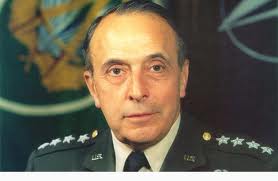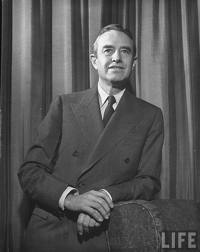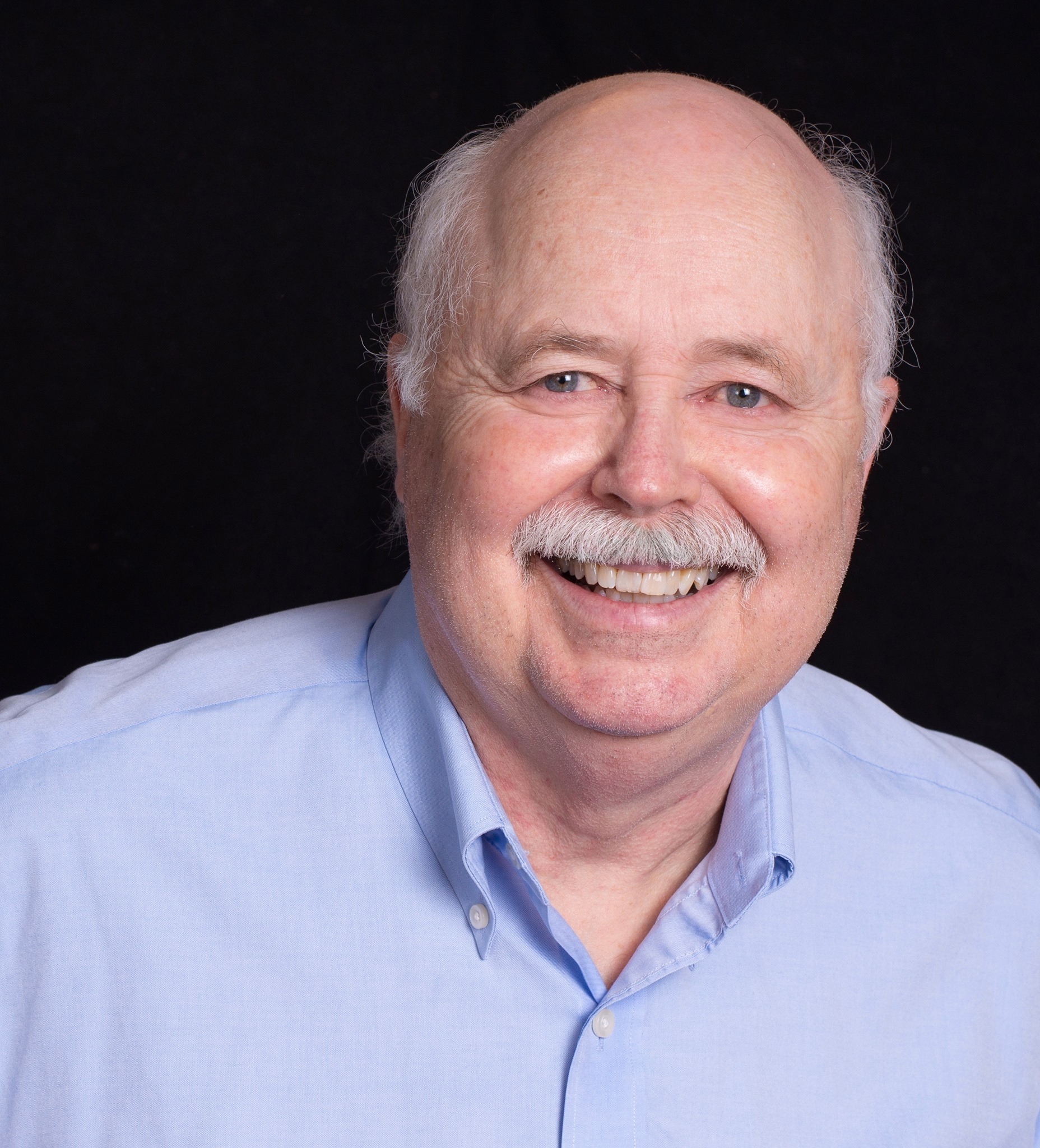Note:In this installment, the eighth in the series on the causes of the decline of the United States as a nation, we explore President John F. Kennedy’s handling of the crisis in Laos from the Bay of Pigs debacle in April of 1961 to the Geneva “Declaration on the Neutrality of Laos” in July of 1962. It is important to keep several things in mind as you read this. First, our premise at the outset of the series was that JFK’s assassination represented a huge turning point for the United States as a nation; a shift away from the policies of peaceful co-existence and ending the Cold War that Kennedy was pursuing, and toward a policy of confrontation and war as planned by the CIA and its Secret Team of intelligence, military and corporate alliances otherwise known as the “military industrial complex”. Second, keep in mind the real question to be answered regarding Kennedy’s assassination is not if there was a conspiracy involved; the real question is why was he killed? It is the answer to this question that we are illuminating with this part of our series and particularly in describing Kennedy’s handling of Laos. Through his actions JFK prevented Laos from becoming our first “Vietnam” in Southeast Asia; instead causing it to become the “Vietnam” that never was…MA
 Following the Bay of Pigs, in late April 1961, a wiser and less naïve John F. Kennedy refocused his attention on the crisis in Laos. He had just successfully resisted his top military and CIA advisors in refusing to send U.S. forces to salvage the CIA’s Cuban brigade and now the same men who had misled him about Cuba were telling him that unless the United States intervened militarily in Laos that country would be lost to the communists. By the end of April the Joint Chiefs of Staff was recommending that JFK commit 140,000 troops to salvage the situation in the small Southeast Asian country.
Following the Bay of Pigs, in late April 1961, a wiser and less naïve John F. Kennedy refocused his attention on the crisis in Laos. He had just successfully resisted his top military and CIA advisors in refusing to send U.S. forces to salvage the CIA’s Cuban brigade and now the same men who had misled him about Cuba were telling him that unless the United States intervened militarily in Laos that country would be lost to the communists. By the end of April the Joint Chiefs of Staff was recommending that JFK commit 140,000 troops to salvage the situation in the small Southeast Asian country.

On May 11th, 1961 the Russians, the Americans and 12 other nations met in Geneva, Switzerland on the subject of Laos while the civil war was raging in that small country. This was the international conference Kennedy had called for in March. As noted in an earlier article (please see “The Crisis in Laos”, the 6th installment of the series) Kennedy had already come out for a neutralist government in Laos free from the domination of foreign nations. This decision placed him at direct odds with the CIA which had assisted General Phoumi Nosavan in overthrowing the neutralist government of Prince Souvanna Phouma sometime earlier and were still assisting Nosavan at the time the Geneva Convention on Laos took place. It was the coup against Phouma which had sparked the latest round of civil war in Laos with Phouma and his half brother Prince Souphanouvong of the communist Pathet Lao allied against General Nosavan’s forces assisted by the CIA.
Against this backdrop of Laotian civil war and the ongoing meetings in Geneva JFK and Soviet Premier Nikita Khrushchev prepared for a summit meeting in Vienna, to be held on June 3rd and 4th, 1961. At the summit Kennedy had to push Khrushchev to get him to agree on the subject of a neutral government for Laos. Khrushchev pointed out that Kennedy well knew that “…it had been the U.S. government that had overthrown Souvanna Phouma”, in Laos. (You will recall that Phouma’s government was already neutral) To this Kennedy responded by saying “Speaking frankly, U.S. policy in that region has not always been wise.” He then reiterated that the desire of the U.S now was for a neutral and independent Laos. The irony of JFK’s position not lost on him, Khrushchev pointed out that Kennedy had “…stated the Soviet policy and called it your own.” JFK’s cold warrior critics in his own government certainly would have agreed with that assessment and were not happy about it. Nevertheless, having finally established a point of agreement with the Soviets that Laos should be neutral and independent, Kennedy contacted Averell Harriman, the U.S. representative at the Geneva talks and told him flatly, “…I want a negotiated settlement in Laos. I don’t want to put troops in.” Twice in the space of three months, first at the Bay of Pigs and now with Laos, Kennedy had taken actions directly counter to those his national security establishment was trying to manipulate him in to.

The immediate effect of JFK’s Laos neutrality strategy on the military and intelligence people surrounding him was twofold. First, it deepened the schism that already existed between them and the President as a result of Kennedy’s handling of the Bay of Pigs. Second, it caused them to start to shift their focus and attention to Laos’s neighbor to the east, the divided nation of Vietnam. Though the CIA would continue to support, train and equip General Phoumi Nosavan and the military would continue to supply him with advisors, it was beginning to look like Kennedy would never allow Laos to become the major Cold War confrontation the Agency and Pentagon wanted it to be. From their view, due to Kennedy’s neutralist commitment, Laos was on the way to being a lost cause.
Vietnam was another matter however. Unlike Laos, which pre-existed U.S. involvement there, South Vietnam and its President Ngo Dinh Diem existed and were in power solely because of CIA and therefore U.S. support. Diem assumed the Presidency of South Vietnam in 1955 with much assistance from Ed Lansdale and the CIA. The 1956 election called for by the Geneva accords of 1954, when the country was temporarily divided along the 17th parallel, never could have been ignored by Diem without this CIA/US support; the superior forces of the Vietminh simply would have come south, overrun the country and Vietnam would be united. Because Diem’s administration relied so much on U.S. support, he was quite taken aback by JFK’s neutralist strategy in Laos and he considered it a threat to his government. What if Kennedy should decide he wanted a neutral South Vietnam?
In an effort to reassure Diem, Kennedy sent Vice President Lyndon Johnson to South Vietnam in May of 1961. On the same trip Johnson visited a number of other Asian allies such as Nationalist China (Taiwan), Thailand and Pakistan. His report to Kennedy following the trip presented a bleak picture of the ripple effect of Kennedy’s neutral policy on Laos; the regimes of these other nations, according to Johnson, were feeling the same way Diem was in South Vietnam. In closing his report to the President, Johnson summed things up this way:
“The fundamental decision required of the United States—and time is of the greatest importance—is whether we are to attempt to meet the challenge of Communist expansion now in Southeast Asia by a major effort in support of the forces of freedom in the area or throw in the towel.”
Kennedy’s neutral stance on Laos and his refusal to commit to anything more than CIA and military advisor support to Laos and South Vietnam was being challenged not just by his intelligence and military chiefs but by his own Vice President.

Despite the pressure from his own government, in Kennedy’s mind he and Khrushchev had resolved the Laotian crisis when they agreed at the June summit on the idea of a neutral Laos. In reality significant problems remained, however. Throughout the summer and into the fall of 1961 the negotiations between the various parties in Geneva dragged on and by August these problems were becoming clearer to the President. First, the Pathet Lao continued to control things in much of Laos militarily and were posing a real threat to just win the civil war outright over the CIA backed Phoumi Nosavan’s forces, which would have obviated the need for continued negotiations toward a neutral Laos. The second problem was that the insurgency in South Vietnam was increasing and guerilla attacks becoming more frequent. A supply and transport route had developed from North Vietnam through eastern Laos to South Vietnam by which men and equipment were being transferred to the guerillas in the south. This route is what would become known as the “Ho Chi Minh Trail”. The use of this trail by North Vietnam was becoming a sticking point in the Laos negotiations. In addition the CIA and Joint Chiefs were now demanding JFK send regular military troops into Vietnam to quell the increasing uprisings there as well as continuing to demand troops for Laos to support Nosavan so as to prevent what looked to be likely victory for the Pathet Lao.

Once again between a rock and the proverbial hard place, JFK was looking at difficult options no matter which direction he turned. Keep in mind the fact that Kennedy, like almost all American politicians of the day, had long since bought the central premise of the Cold War, that it was a battle between the forces of freedom, represented by the U.S., and the monolithic communist threat. In late summer of ’61 he had not yet rejected that premise and so found himself walking a very thin line. Having observed the French and not wanting that fate for his country he was opposed to committing regular U.S. military beyond equipment and advisors, yet faced with the threat of losing Laos outright to the communists as well as potentially Vietnam, he felt he had to do something. Kennedy responded to this dilemma at the end of August by backtracking on his “neutral Laos” commitment and raising the total of advisors approved for Laos to 500 and authorizing the CIA to train and equip 2,000 more members of the “Hmong” (pronounced “moong’) tribe to assist in the fight against the communists. (The “Hmongs” were an indigenous people from the Laotian highlands. Nine thousand of the tribe were already involved in the CIA’s covert army and the addition now made eleven thousand; eventually the number would reach 30,000)
Finally, in October 1961, there was at last a breakthrough in Geneva when the major Laotian factions represented there agreed to the concept of a neutral, provisional government with Souvanna Phouma as its prime minister. The language of the agreement also stipulated that Laos could not be used by neighboring states for their purposes, which meant that North Vietnam would not be able to use the “Ho Chi Minh Trail” as they had been. The Soviet Union agreed to take on the role of policing the compliance of the communist groups and nations at the conference to the agreement. The hopeful aspect of this accord to Kennedy was soon compromised by other factors that arose, however. The Soviets really had no power over North Vietnam or the Pathet Lao and had no way, really, of enforcing their compliance. Also, the communist nations insisted on the right to approve the movements of the International Control Commission in inspecting compliance to the agreement. (The International Control Commission was set up as an independent group with 3 members, 1 from communist Poland, 1 from anti-communist Canada and 1 from neutral India as an additional means of inspecting and enforcing compliance) The Russians, North Vietnamese and Pathet Lao would not compromise on this point and in the final agreement this effectively eliminated the ICC as any kind of policing agency.

Due to the intractability of the communist nations Kennedy authorized Harriman to compromise on the ICC point and the negotiations moved forward. It would be another 8 months before, on July 23rd 1962 the United States, the Soviet Union and 12 other nations all signed the “Declaration on the Neutrality of Laos” in Geneva, Switzerland. Across those eight months the CIA with their support of Phoumi Nosavan and their “covert” Hmong army did their best to ensure that the fragile negotiations would never result in an agreement. In early 1962 Nosavan tried to provoke an international incident with the Pathet Lao by reinforcing a garrison called “Nam Tha” that was only 15 miles from the Chinese border and very close to Pathet Lao held territory. He then tried to provoke an attack from the Pathet Lao which, while succeeding in causing a few firefights, did not result in the hoped for attack. Nevertheless the CIA and Nosavan, pulling an old page from Ed Lansdale’s CIA playbook, staged a retreat from Nam Tha across the Mekong River into Thailand, claiming they were under Pathet Lao attack; an attack which did not, in fact, really exist. Their intention was to once again try and force JFK’s hand in sending troops to Laos to counter the Pathet Lao threat and thus destroy the negotiations.
The machinations of the CIA and Nosavan with regard to the Nam Tha ploy were apparently an open secret to much of the rest of the world. The Times of London reported on the situation as follows:
“CIA agents had deliberately opposed the official American objective of trying to establish a neutral government, had encouraged Phoumi in his reinforcement of Nam Tha, and had negatived the heavy financial pressure brought by the Kennedy administration upon Phoumi by subventions from its own budget…The General apparently was quite outspoken, and made it known that he could disregard the American embassy and the military advisory group because he was in communication with other American agencies.”
With the report from the Times as well as his own reports Kennedy must have understood what the CIA was up to in Laos. Though he responded to the pressure brought about from the Nam Tha incident by stationing American troops in the neighboring country of Thailand and having contingency plans drawn up to intervene in Laos should it become necessary, he once again stopped short of committing American troops to the civil war torn nation. His true understanding of what occurred at Nam Tha was indicated by another action he took on the matter; the transferring of the closest CIA officer to Phoumi Nosavan, a man named Jack Hazey.
From the beginning of his administration through to the Geneva neutrality declaration on Laos in July of ’62, JFK had negotiated a minefield largely laid for him by his own CIA with complicity from his own military men designed to force him to intervene in Laos with regular U.S. forces. He side stepped them every step of the way, and by his actions ensured that Laos did not become for the U.S. the quagmire that Vietnam would come to be. In a sense he ensured that Laos became the “Vietnam” that never was.
Knowing this now, one is compelled to wonder…what would have happened in Vietnam had John F. Kennedy lived?

